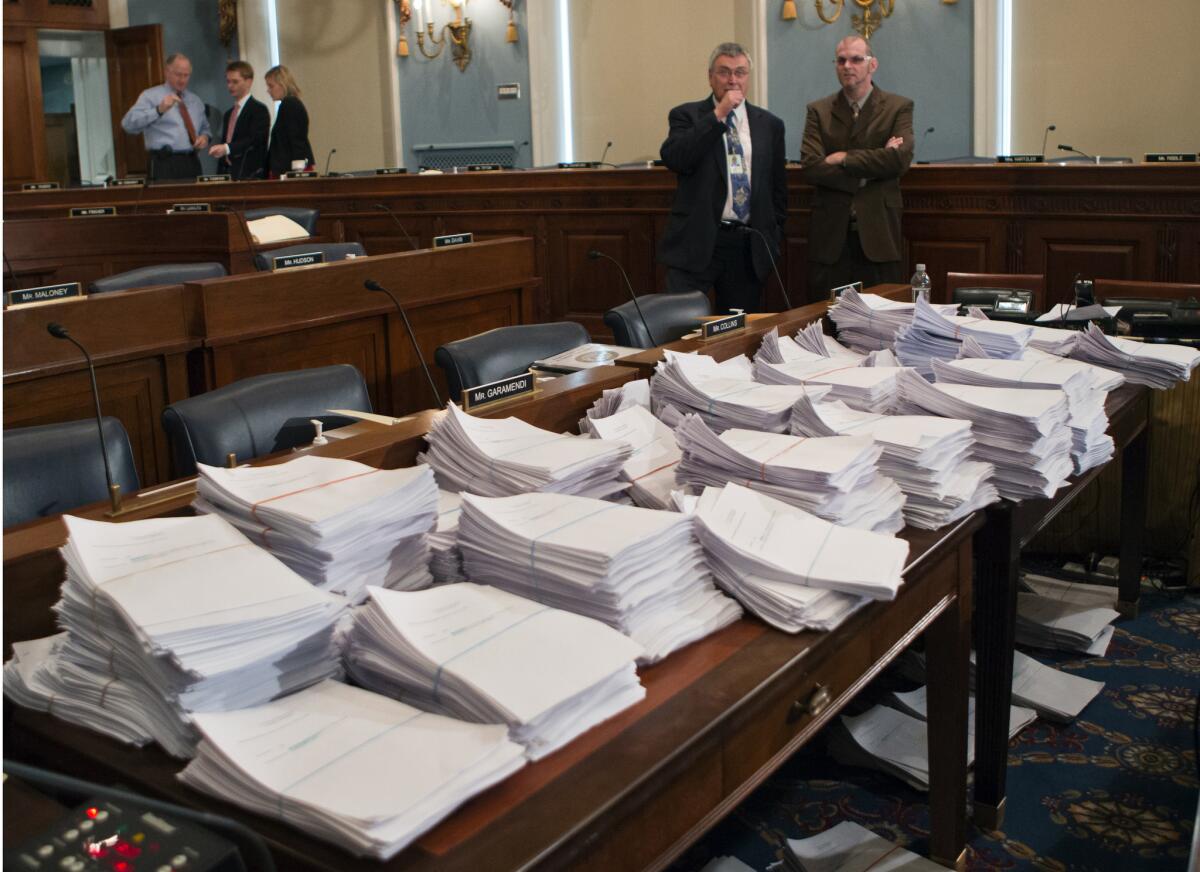The case for food stamps

To hear Republicans â and some Democrats â in Congress talk, youâd think food-stamp dollars just disappear into a black hole. The prevailing debate in the Senate and House versions of the farm bill, which contains funding for food stamps (the Supplemental Nutrition Assistance Program, or SNAP), is over how much to cut. But when more than 15% of Americans remain impoverished, slashing food assistance for the poor makes no sense in humanitarian, economic or public health terms.
The House bill, which is gaining steam after passage by the Agriculture Committee last week, is the more draconian of the two. It would chop $20 billion over 10 years from SNAP, and its changes to food-stamp eligibility rules would cut off vital sustenance for about 2 million low-income people, including seniors and families with children. According to the Congressional Budget Office, 210,000 children in low-income families would lose their free school meals under the House plan.
The Senate version would cut far less, though a final figure will be hashed out by a conference committee in June. But the attacks on food assistance for the poor are deeply misguided and are only going to get worse. The proposed House budget from Rep. Paul D. Ryan (R-Wis.) seeks to gut food stamps by another $135 billion through block grants to states.
Yet government and other studies clearly show that food stamps are among the most wisely spent public dollars, providing essential nourishment and public health benefits to low-income people as well as economic stimulus to rural and urban communities. These are returns on spending that you wonât find in the corporate tax giveaways and military spending boondoggles routinely supported by both political parties, even as they scream for austerity when it comes to slashing âentitlementsâ and food assistance for the poor.
The Trust for Americaâs Health, a health advocacy organization that focuses on disease prevention, warned recently of the consequences of cutting food stamps: âIf the nation continues to underfund vital public health programs, we will never achieve long-term fiscal stability, as it will be impossible to help people get/stay healthy, happy and productive.â
Indeed, according to a 2011 study by the U.S. Department of Agriculture, âresearch shows that low-income households participating in SNAP have access to more food energy, protein and a broad array of essential vitamins and minerals in their home food supply compared to eligible nonparticipants.â
Those in Congress pushing for cuts ignore the evidence that cutting food stamps doesnât save money â it actually costs money in added public health expenses and lost job creation. Pushing millions of low-income Americans off food stamps means less nutrition and nourishment, leading to greater human suffering and healthcare costs. According to the Centers for Disease Control and Prevention, âgood nutrition can help lower risk for many chronic diseases, including heart disease, stroke, some cancers, diabetes and osteoporosis.â As it is, public healthcare expenses for diet-related diseases such as diabetes and heart disease cost taxpayers more than $100 billion annually.
In another key finding, the National Academy of Sciences reported that food stamps helped lift nearly 4 million Americans out of poverty in 2010, while improving basic food and economic security for millions more.
Cutting food stamps also means reducing economic stimulus and job creation, precisely whatâs needed to help reduce poverty and hunger. The 2011 USDA study found that food-stamp dollars âripple throughout the economies of the community, state and nation,â creating multiple levels of economic stimulus. The study also found that âevery $5 in new SNAP benefits generates a total of $9.20 in community spending.â Each additional food-stamp dollar generates another 17 to 47 cents of additional food purchases.
Farm state legislators might consider this USDA finding as well: âOn average, $1 billion of retail food demand by SNAP recipients generates 3,300 farm jobs.â
Or they could listen to the Congressional Budget Office, which ranks an increase in food stamps as one of the two most cost-effective spending and tax options for boosting growth and jobs in a weak economy. Each food-stamp dollar produces $1.72 in additional economic activity, the CBO found.
In the farm bills moving through Congress, the politics of austerity are again being used to undermine food assistance for the poor. As the House and Senate debate how many dollars and people to cut from food stamps, their members should consider the daily realities the poor face. Most are living on a few dollars a day for food and, at best, work in minimum-wage jobs that barely cover rent. Cutting off these basic supports for those at the bottom of our economy is unwise, counterproductive and shameful.
Christopher D. Cook is a journalist and the author of âDiet for a Dead Planet: Big Business and the Coming Food Crisis.â christopherdcook.com.
More to Read
A cure for the common opinion
Get thought-provoking perspectives with our weekly newsletter.
You may occasionally receive promotional content from the Los Angeles Times.










